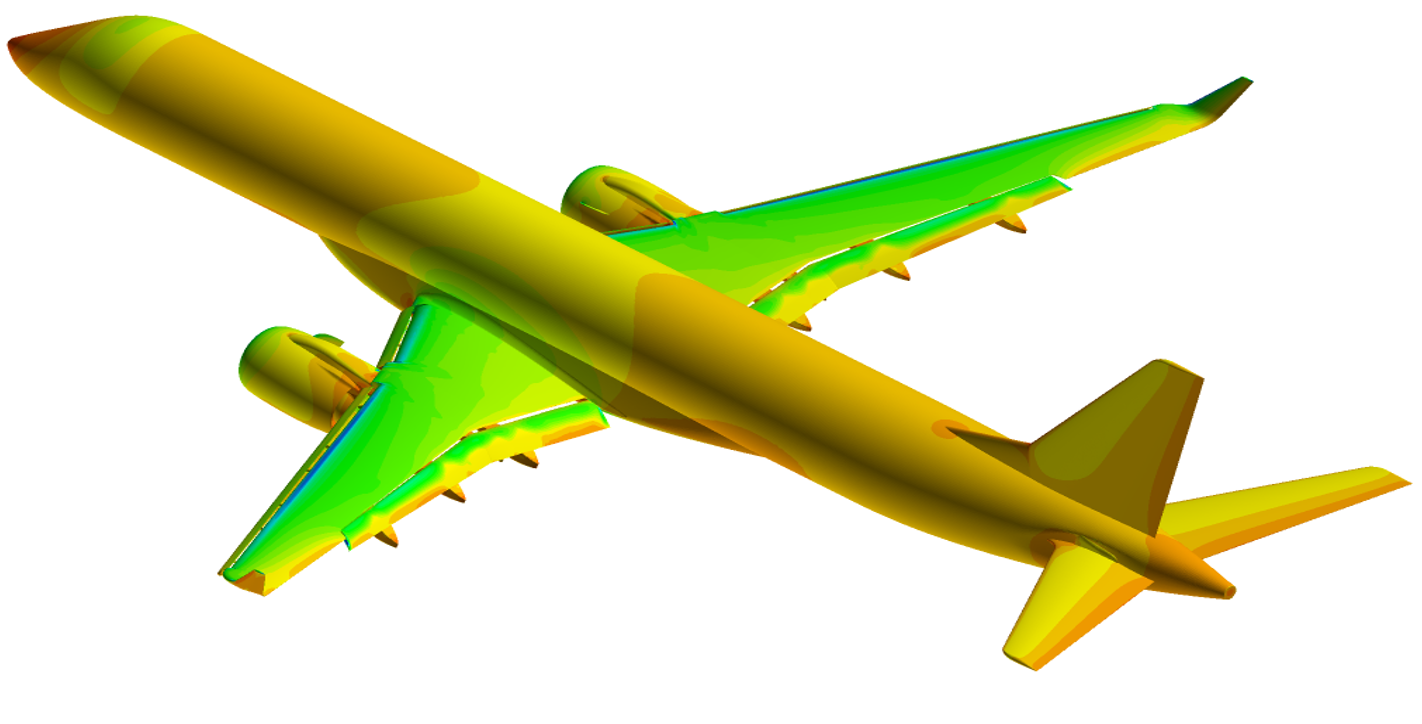Aerodynamic Simulations on Airframe Noise Reduction Technology (FQUROH+)
JAXA Supercomputer System Annual Report April 2020-March 2021
Report Number: R20EDA101R20
Subject Category: Aeronautical Technology
- Responsible Representative: Yoshikazu Makino, Aviation Systems Research Unit, Aeronautical Technology Directorate
- Contact Information: Takehisa Takaishi, Flight Demonstration of Quiet Technology to Reduce Noise from High-Lift Configurations (FQUROH+) Team, Aviation Systems Research Unit, Aeronautical Technology Directorate(takaishi.takehisa@jaxa.jp)
- Members: Takehisa Takaishi, Mitsuhiro Murayama, Yasushi Ito, Ryotaro Sakai, Kazuomi Yamamoto, Tohru Hirai, Kentaro Tanaka, Kazuhisa Amemiya, Gen Nakano, Takashi Ishida
Abstract
The FQUROH (Flight Demonstration of Quiet Technology to Reduce Noise from High-Lift Configurations) project aims at raising the technical maturity level of the noise reduction technology for high-lift devices and landing gear, which draws international attention to reduce noise in areas around airports, to a level applicable to future development of aircraft and related equipment. This contributes to reduction of aircraft noise in local communities around the airport and airline operating costs by reducing landing fee. One of the objectives of the FQUROH project is to verify the feasibility of practical noise reduction concepts and design methods based on advanced computational simulations through modification of aircraft. Computational simulations were performed as part of the FQUROH project to investigate Reynolds number effects, wind tunnel wall interference effects, and time-mean flow features around major aeroacoustic noise sources, such as slats.
Reference URL
Please refer to http://www.aero.jaxa.jp/eng/research/ecat/fquroh/ .
Reasons and benefits of using JAXA Supercomputer System
The JSS2 enabled a large number of high-fidelity Reynolds-averaged Navier-Stokes (RANS) simulations with aerodynamically-important details in several flight configurations in the expected flight envelop to be conducted in a timely manner. The aerodynamic effect of low-noise devices can be evaluated and quantified, which is difficult to obtain only with wind tunnel tests.
Achievements of the Year
Aerodynamic simulations by RANS CFD have been conducted for a civil aircraft model in a high-lift configuration as shown in Fig.1. Sensitivities of the fidelity of model geometries and a wall interference effect of its half-span wind tunnel model have been investigated to improve the prediction accuracy of the aerodynamic performance of the aircraft. During the design process of the noise reduction devices, these simulations have been utilized to investigate flowfields associated with the noise generation from high-lift devices, such as slats and flaps. Computational simulations have been also conducted to evaluate the impact of the low-noise devices on flowfields and aerodynamic performance of the aircraft to ensure that the devices are effective in noise reduction and have a negligible impact on aerodynamics.
Publications
N/A
Usage of JSS
Computational Information
- Process Parallelization Methods: MPI
- Thread Parallelization Methods: Automatic Parallelization
- Number of Processes: 216
- Elapsed Time per Case: 40 Hour(s)
Resources Used(JSS2)
Fraction of Usage in Total Resources*1(%): 0.59
Details
Please refer to System Configuration of JSS2 for the system configuration and major specifications of JSS2.
| System Name | Amount of Core Time(core x hours) | Fraction of Usage*2(%) |
|---|---|---|
| SORA-MA | 3,583,387.74 | 0.68 |
| SORA-PP | 2,907.97 | 0.02 |
| SORA-LM | 11.10 | 0.01 |
| SORA-TPP | 0.00 | 0.00 |
| File System Name | Storage Assigned(GiB) | Fraction of Usage*2(%) |
|---|---|---|
| /home | 48.66 | 0.04 |
| /data | 6,519.05 | 0.13 |
| /ltmp | 1,552.32 | 0.13 |
| Archiver Name | Storage Used(TiB) | Fraction of Usage*2(%) |
|---|---|---|
| J-SPACE | 280.06 | 9.27 |
*1: Fraction of Usage in Total Resources: Weighted average of three resource types (Computing, File System, and Archiver).
*2: Fraction of Usage:Percentage of usage relative to each resource used in one year.
Resources Used(JSS3)
Fraction of Usage in Total Resources*1(%): 0.60
Details
Please refer to System Configuration of JSS3 for the system configuration and major specifications of JSS3.
| System Name | Amount of Core Time(core x hours) | Fraction of Usage*2(%) |
|---|---|---|
| TOKI-SORA | 3,274,312.53 | 0.70 |
| TOKI-RURI | 63.48 | 0.00 |
| TOKI-TRURI | 0.00 | 0.00 |
| File System Name | Storage Assigned(GiB) | Fraction of Usage*2(%) |
|---|---|---|
| /home | 73.05 | 0.05 |
| /data | 8,449.02 | 0.14 |
| /ssd | 101.63 | 0.05 |
| Archiver Name | Storage Used(TiB) | Fraction of Usage*2(%) |
|---|---|---|
| J-SPACE | 280.06 | 9.27 |
*1: Fraction of Usage in Total Resources: Weighted average of three resource types (Computing, File System, and Archiver).
*2: Fraction of Usage:Percentage of usage relative to each resource used in one year.
JAXA Supercomputer System Annual Report April 2020-March 2021



